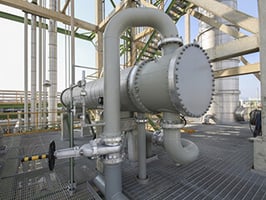“The latest Thomas Industrial Survey assessing the ongoing impacts of COVID-19 on North American...
3 Reasons to Use Copper for Drinking Water Pipes | thinkcopper
Two years after the Flint Water Crisis made international news, thousands of lead service lines are still buried underground across North America. Faced with two main material options to consider, plastic or copper, municipalities, utilities, developers and homeowners must weigh health implications, costs and environmental impacts for their lead service line replacements that will have effects on future generations.
Health Implications
Copper leaching is understood; plastic leaching isn’t. Copper service lines are completely impermeable, preventing outside chemicals, such as petroleum products that may be spilled on nearby streets or insecticides and fertilizers that are intentionally spread on yards, from contaminating the water system. The conditions that may cause copper leaching, as well as the potential health effects of copper, are long-established and well-known.*
The same cannot be said for plastics. Recent studies indicate that plastic materials can leach chemicals that affect taste and odor, but are difficult to identify, inconsistent between type of plastic and manufacturer and, most importantly, have little to no information on how they might affect human health. In underground installations, plastics have been known to allow organics, pesticides, petroleum products, and other contaminants to penetrate through the wall of the piping and into the water being delivered through the system.
Copper on the other hand is an essential micronutrient for human life and development and exists naturally in most water supplies. In addition to supplying dietary copper, it kills pathogenic microbes and does not leach potentially harmful chemicals or organic substances that can provide a food source for the growth of microbes in the piping systems.



Blog comments